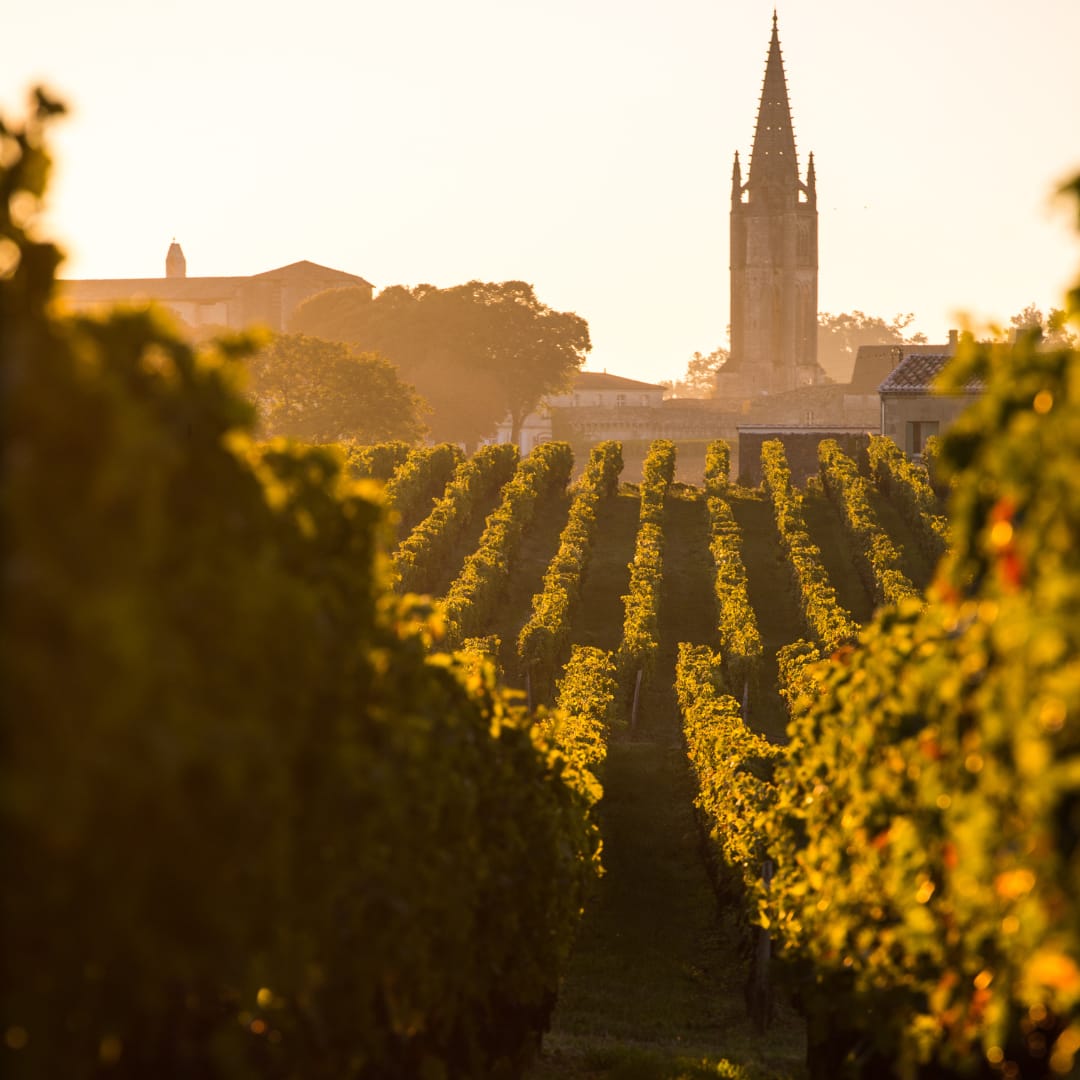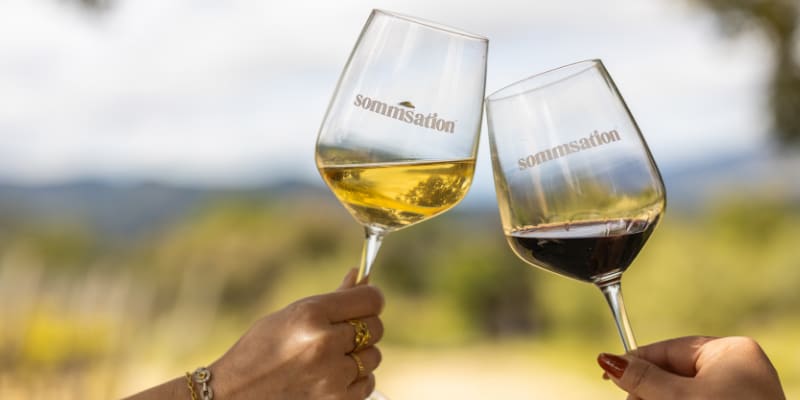Wine
Pinot Grigio vs Chardonnay: Your Guide to White Wine
September 25, 2025

Pinot Grigio and Chardonnay are two of the wine world’s most popular grape varieties, and it’s no surprise why. In addition to being approachable and accessible, these two grape varieties pair well with a variety of dishes, and have distinct characteristics that appeal to an array of preferences. However, understanding the differences between Pinot Grigio and Chardonnay can help you make an informed decision when selecting a bottle for your next gathering or meal.
Whether you're a casual wine drinker or a connoisseur, there’s always something to learn about these two varieties—nad our expert team’s letting you in on everything you need to know. From origins and flavor profiles to winemaking styles, food pairings, and beyond, discover everything you need to know about these two white grape varieties below.
Origin Stories
Pinot Grigio, also known as Pinot Gris, traces its roots back to the Burgundy region of France, though the grape has become greatly associated with Italy, specifically its northeastern regions. This light-skinned grape is a mutation of the Pinot Noir grape, and its name translates to "gray pine cone" in Italian, referring to the grayish-blue hue of the grape clusters.
Chardonnay, on the other hand, is a green-skinned grape variety that also originates from the Burgundy region of France. However, like Pinot Grigio / Gris, this beloved variety is also now cultivated in countless wine regions worldwide, including California, Australia, and South America. Fun fact: The name "Chardonnay" is believed to derive from the village of Chardonnay in the Mâconnais region of Burgundy.
The thread that ties them both together? Simply put, place of origin. Hugo Arias, Sommelier at Sommsation, explains that thanks to their similar origins, Chardonnay and Pinot Gris are often planted together in similar, cooler-climate places, such as the Willamette Valley, Northern Italy, and California’s Russian River Valley. “However, Pinot Grigio is almost always produced in colder regions like Alsace, Oregon, Trentino-Alto Adige, so as to maintain their fruity and floral nature,” he says, citing a broader climate range for Chardonnay.
Flavor Profiles and Characteristics

Pinot Grigio is known for its light-bodied, crisp, and refreshing character. Wines made from Pinot Grigio typically showcase flavors of green apple, pear, and citrus, with a slight minerality. Italian Pinot Grigios, in particular, are celebrated for their dry and zesty qualities, making them an ideal choice for hot summer days or as an aperitif—though when vinified with a bit of skin contact, the wines become more textured, darker hued, and boast an approachable amount of tannins that pair impeccably with a variety of dishes and cuisines. “Overall, Pinot Gris tends to be more floral and shows little to no oak influence on the palate,” Arias explains.
Similarly, Chardonnay showcases a broader spectrum of flavors and aromas, which are largely influenced by the climate and winemaking techniques employed. “Chardonnay can be made in different styles depending on where it is from,” says Arias, stating that wines can range from bit, oaky, and buttery to light, acid forward, and more fruit driven.
In short, unoaked Chardonnays tend to be crisp and fruit-forward, with notes of apple, melon, and lemon, whereas oaked Chardonnays, often develop a rich, creamy texture and complex flavors of vanilla, butter, and toasted nuts, thanks to the influence of oak barrel aging.
Ageworthy Potential

Arias notes that the aging potential for wines made from either grape is greatly dependent on how—and from whom—the wine was made. “Acidity, tannins, and alcohol are key,” Arias explains, stating that Chardonnay with enough acidity, structure, and generally some oak treatment (“Oak has tannins!” he claims) can frequently age for longer periods of time, as the wine has more “tools” to help with the process. “However, some Chardonnay is better for youthful drinking—it all depends on how it was made, as well as the variables above to consider,” he says.
Similarly, Arias notes that Pinot Grigio-based wines boast acidity, but often not the alcohol, oak presence, or structure to help it along for the long haul, so they’ll generally be better enjoyed in their youth. The exception, however, is Pinot Gris-based wines made from top producers in Alsace and Oregon, which can often withstand longer bouts of time in the cellar—and according to Arias, are totally worth the patience.
Food Pairings and Serving Suggestions
When it comes to food pairings, Pinot Grigio and Chardonnay each have their strengths. Pinot Grigio's light, crisp nature makes it an excellent companion for delicate dishes such as seafood, salads, and light pasta recipes. Its refreshing acidity can cut through the richness of fried foods, making it a popular choice for appetizers and finger foods.
“When it comes to wine pairings with these two varieties, I actually prefer Pinot Gris over Chardonnay and the reason is the high acid found in the former,” says Arias. “Acidity is always the best friend for successful pairings, and the reality is that Pinot Gris usually has more than Chardonnay,” he says.
Chardonnay's versatility allows it to complement a wide array of dishes, depending on the style of the wine. Unoaked Chardonnays pair well with lighter fare, such as grilled chicken, fish, and vegetables, while their crisp acidity can balance the creaminess of dishes like risotto or pasta with white sauce. Oaked Chardonnays, with their rich texture and complex flavors, can stand up to heartier meals, such as roasted pork, butter-based sauces, and soft, mild cheeses.
“Chardonnay with a lot of structure does better with richer dishes like risotto, rabbit, quail, and any preparation that utilizes creamy cheeses,” he says. On the contrary, Arias notes that lighter, more delicate expressions of Chardonnay are perfect with fish, vegetables, and poultry. Above all, when serving either of these varieties, it's essential to consider their ideal temperature. Pinot Grigio is best enjoyed well-chilled, around 45-50°F (7-10°C), to maximize its refreshing qualities. Chardonnay, especially oaked varieties, can be served slightly warmer, around 50-55°F (10-13°C), to allow its complex flavors to unfold.
Exploring the World of Pinot Grigio and Chardonnay
While Italy and France may be the most well-known producers of Pinot Grigio and Chardonnay, respectively, these grapes are grown and vinified in many regions worldwide. Exploring the different expressions of these varieties can be a fascinating journey for wine enthusiasts.

Notable regions for Pinot Grigio include:
- Alsace, France: Known for its rich, full-bodied Pinot Gris wines with hints of spice and honey.
- Oregon, USA: Produces elegant, medium-bodied Pinot Gris with flavors of pear, melon, and mineral notes.
- Australia: Offers a range of styles, from crisp and light to more textural and complex Pinot Gris wines.

For Chardonnay, some regions to explore include:
- Burgundy, France: The benchmark for Chardonnay, producing some of the world's most sought-after and expensive wines.
- California, USA: Known for its bold, oak-influenced Chardonnays, though plenty of balanced oaked and unoaked styles are gaining popularity.
- Australia: Offers a spectrum of Chardonnay styles, from crisp and citrusy to rich and buttery.
By venturing beyond the most well-known regions and styles, wine lovers can discover a wealth of diverse and captivating expressions of both Pinot Grigio and Chardonnay. This exploration can lead to a deeper appreciation for the nuances and potential of these beloved white wine varieties.
As you continue to explore the expansive world of white wine, remember that the journey is just as enjoyable as the destination. Whether you prefer the crisp, refreshing nature of Pinot Grigio or the rich, complex flavors of Chardonnay, there's always something new and exciting to discover.
Looking to deepen your appreciation for wine and create unforgettable experiences, we invite you to book a personalized wine tasting or explore our curated wine selections today.


